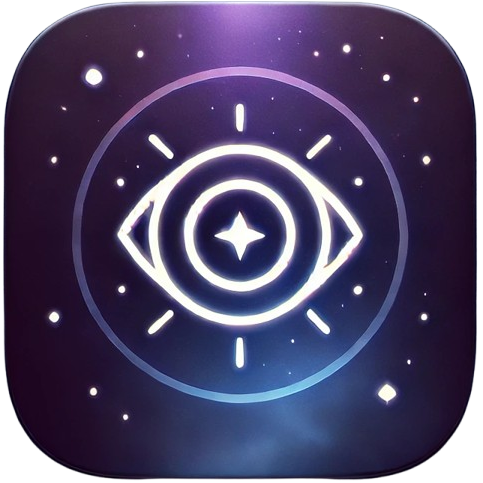The concept that “you’re not your body, your thoughts, or your mind” is rooted in ancient philosophies and modern psychological understandings of identity, self-awareness, and consciousness. While it might seem counterintuitive at first—after all, we perceive the world through our bodies, thoughts, and minds—the deeper exploration of this idea reveals that the true essence of who we are extends far beyond these physical and mental constructs. Let’s unpack this idea and explore how it can transform our understanding of self.
1. You’re Not Your Body
It’s easy to identify with our bodies because they are the most tangible part of our existence. We experience sensations, emotions, and the world through our physical forms. However, many spiritual traditions, such as Buddhism and Hinduism, emphasize that the body is merely a vehicle for the self—a temporary vessel we inhabit.
From a scientific perspective, we know that the cells in our bodies are constantly regenerating. In fact, after several years, most of the cells in your body will have completely replaced themselves. If we constantly change on a cellular level, can we truly identify ourselves as our bodies? The body is part of the self, but it is not the whole of it. Aging, illness, and physical transformations do not change the core essence of who we are.
2. You’re Not Your Thoughts
Thoughts come and go, often without our control. They are fleeting and ever-changing, and yet, we often identify with them strongly. The idea that “I am my thoughts” can lead us to believe that every passing thought defines us, creating an unstable sense of self.
In mindfulness and meditation practices, there is a key teaching: you are the observer of your thoughts, not the thoughts themselves. Thoughts are simply mental events—like clouds passing in the sky—appearing and disappearing in the field of your awareness. By practicing mindfulness, we learn to observe our thoughts without attachment or judgment. This helps us recognize that while we experience thoughts, we are not defined by them.
3. You’re Not Your Mind
The mind, which encompasses our thoughts, memories, emotions, and intellect, is often seen as the seat of identity. However, the mind is also subject to fluctuations, moods, and biases. It can be influenced by external stimuli, past experiences, and even chemical changes in the brain. If our minds are so variable, can they truly represent our unchanging core self?
In many philosophical and spiritual traditions, the mind is viewed as a tool or instrument that we use to navigate the world, but it is not synonymous with the self. The Upanishads, ancient Indian texts, describe the self (Atman) as beyond the mind, senses, and body—an eternal, unchanging consciousness that witnesses the activities of the mind without being entangled in them. Similarly, in Western philosophy, René Descartes’ famous statement “I think, therefore I am” led to discussions about whether the act of thinking is what defines existence, or whether something deeper lies beneath the thoughts.
4. The Observer: Who Are You Really?
If you are not your body, your thoughts, or your mind, then what are you? This question points to the idea of a deeper consciousness or awareness that transcends these surface-level aspects of existence. In meditation and introspective practices, the aim is often to connect with this inner observer, the part of you that watches your thoughts, feelings, and bodily sensations without identifying with them.
This observer—sometimes referred to as the witness or pure awareness—is thought to be the true essence of the self. It remains constant even as our body ages, our thoughts change, and our minds adapt. By shifting our identification from the mind, body, and thoughts to this pure awareness, we can achieve a sense of peace and clarity, free from the turmoil of the external world.
5. Psychological Implications
In modern psychology, the idea of not identifying with thoughts and emotions is a core principle in practices such as Cognitive Behavioral Therapy (CBT) and Acceptance and Commitment Therapy (ACT). These therapies encourage individuals to observe their thoughts and feelings without getting caught up in them, allowing for greater emotional regulation and mental well-being.
Similarly, Eckhart Tolle, in his book The Power of Now, discusses the concept of the “egoic mind”—the part of us that constantly identifies with thoughts and emotions, leading to suffering. He suggests that by disidentifying with this mind-created sense of self, we can live in a state of presence, fully engaged with the moment without being dominated by mental chatter.
6. Living Beyond the Body, Mind, and Thoughts
Understanding that you are not your body, thoughts, or mind can be liberating. It helps reduce the pressure to constantly mold your identity based on external standards or fleeting emotions. Instead, it invites you to embrace a more stable and profound sense of self—one that is grounded in awareness and inner peace.
By recognizing the impermanence of your physical form, the transience of your thoughts, and the fluctuations of your mind, you can begin to connect with a deeper, unchanging consciousness that is at the heart of who you are. This realization offers freedom from suffering and opens the door to living more authentically and peacefully.
Conclusion
The notion that “you are not your body, your thoughts, or your mind” challenges conventional ideas of self-identity and encourages a deeper exploration of consciousness. Rooted in both ancient wisdom and modern psychology, this concept invites us to discover a sense of self that is beyond the physical and mental, offering a path to inner peace and self-realization. By connecting with the observer within—the pure awareness that witnesses all—we can begin to transcend the limitations of our body and mind and experience life in its fullest form.


























